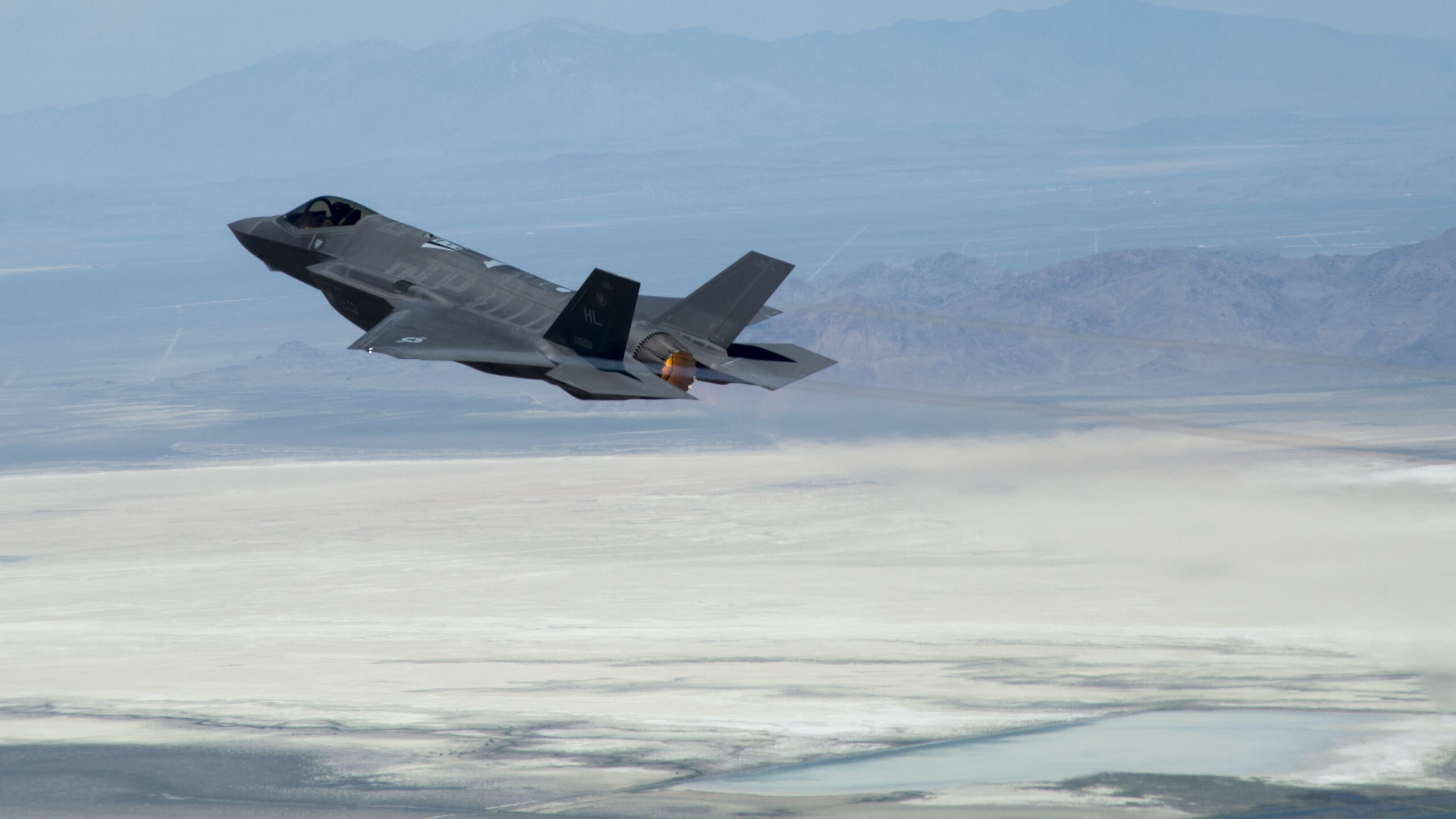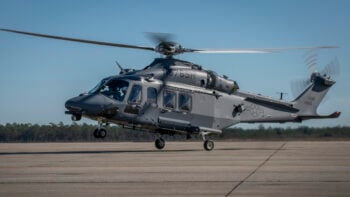
A F-35 Lightning ll from the 388th Fighter Wing, Hill Air Force Base, Utah, flies over the Utah Test and Training Range (Photo: US Air Force)
PARIS AIRSHOW — Lockheed Martin is officially supporting an alternative to the legacy F135 engine that powers the F-35, the head of the company’s aeronautics division said in an interview at the Paris Airshow today.
“I’m going to advocate, and I do advocate, for [the Adaptive Engine Transition Program, or AETP], another engine,” said Greg Ulmer, Lockheed’s executive vice president of aeronautics. “I think some of the approaches today are very short-sighted and not considering a longer-term view” for the F-35, he added.
Ulmer’s backing of a new engine for the Joint Strike Fighter stems in part from its decades of remaining service life, which will include future upgrades. “Let’s put as much margin in the airplane as we can today, such that in the future, I don’t have to put another motor in. I don’t have to bring new power and thermal management cooling into the airplane,” he said.
And, Ulmer highlighted, an adaptive engine brings further improvements beyond power and cooling increases, such as greater thrust and fuel efficiency. “So you get the benefit of new capability in terms of power and cooling. But you also get aircraft performance improvement with AETP,” he said. “I’m thinking broader. I’m thinking longer-term.”
The advocacy of the jet’s prime contractor on behalf of AETP is a boon to GE Aerospace, which has been pushing for an adaptive engine option, and is conversely a blow to incumbent engine manufacturer Pratt & Whitney, which is seeking to continue its lock on powering the tri-variant fleet. Both engine manufacturers have designed prototypes through AETP, which would be expected to compete in the event that an adaptive engine solution is ultimately pursued, but Pratt, as the incumbent engine provider, stands to benefit from keeping the F135 in place and improving it through its preferred Engine Core Upgrade (ECU).
Despite the Air Force’s decision to shutter AETP as part of its fiscal 2024 budget request, Ulmer insisted that interest in AETP prevails in the halls of the Pentagon. “I think they’ve made a decision informed by block four and the requirements as they understand them today. I think there’s elements within the Pentagon talking along the lines that there will be a block 5 and a block 6, and there’ll be other considerations in the future,” he said.
It’s unclear how the fighter’s international buyers might react to a decision to re-engine the aircraft with the pricey adaptive powerplant, which Ulmer described as a “trade” that each customer will have to weigh depending on their planned requirements. Since the adaptive engine won’t fit with the vertical takeoff and landing variant of the fighter, for example, Ulmer reasoned that the ECU will be available to those customers who don’t want to field an adaptive engine.
Additional sustainment infrastructure will be needed to support more than one engine type, though Ulmer downplayed that concern, emphasizing that capability requirements must come first. “If the capability is required, from a technology perspective, they’ll have to put the infrastructure in place to support that,” he said.
“If they go to an [adaptive engine], they’ll have to put whatever those deltas are in place to support that,” he said. “But it’ll be capability driven, in my view.”
But funding AETP — much less AETP and ECU simultaneously — will be expensive, a key reason why Air Force Secretary Frank Kendall said earlier this year that the service decided to discontinue AETP. Members of the House Armed Services Committee would seek to keep AETP going in FY24 with approximately $588 million in funding, according to draft text of the legislation previously posted by the committee, with House appropriators similarly backing continued funding but at the lower amount of $150 million.
Ulmer said that $150 million would be enough to keep the program alive until next year, when the F-35 Joint Program Office (JPO) is expected to formalize its requirements for power and cooling out to the end of the aircraft’s service life.
Alongside engine modernization, the JPO is also pursuing changes to the aircraft’s Power and Thermal Management System (PTMS). “We’ll use the requirements to define what we need, and then we’ll determine what we think provides the best solution,” he said.
On Monday, Raytheon Technologies (now rebranded as RTX) through its subsidiary Collins Aerospace emphasized that its offering for the PTMS, called the Enhanced Power and Cooling System, would offer significant cooling margin to support future upgrades.
Ulmer said he’s open to options beyond the current Honeywell-supplied PTMS, though he emphasized that the requirements must come first before the right choice for the Joint Strike Fighter can be identified.
“Just because someone has an offering today, doesn’t mean that’s the solution,” he said.






















